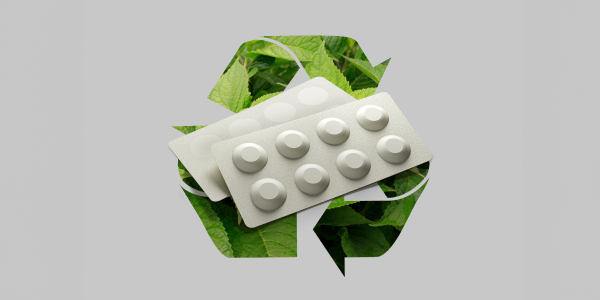6 Pharma Product & Packaging Trends

Trends shaping the pharmaceutical sector in 2025 are focused on increasing gel-capsule adoption, evolving global regulations, greater emphasis on sustainability, and additional factors impacting pharma packaging and shipping practices, according to one expert who shares his insights below.
1. Gel capsule emergence
Softgels, or gel capsules, are a leading dosage form for delivering liquid or semi-liquid pharmaceuticals. A recent Allied Market Research report cites their annual 5.4% CAGR growth set to reach $7.5 billion in 2031.
“Encased in a soft gelatin or plant-based shell, these capsules provide an effective means of delivering active ingredients, making them a popular choice among consumers and manufacturers alike. With their ease of swallowing, improved bioavailability, and ability to mask unpleasant tastes, softgel capsules continue to gain traction across global markets,” according to the Allied report.
The rise of gel-based capsules ushers important packaging considerations, according to Akbar Ali, PhD, general manager and head of development and technology at ACG, the global pharma packager and supplier with heavy investment in capsule production.
Due to their shell composition, soft-gel capsules are more susceptible to moisture and oxygen exposure, which can impact the stability and potency of the contents. As a result, they require specialized packaging materials with more advanced barrier properties than those used for solid oral dosages, says Ali, a product developer and materials (including polymers) scientist.
“These films use advanced polyvinylidene chloride (PVdC) coatings, such as Solvay’s Diofan Super B, to provide exceptional resistance to both moisture and oxygen. This makes them particularly suitable for pharmaceuticals that are highly sensitive to environmental factors, ensuring extended shelf life and product stability,” Ali says.
2. Evolving global regulations
While regulations such as the Packaging and Packaging Waste Regulation (PPWR) currently have minimal impact on primary drug packaging, they significantly affect secondary and tertiary packaging.
Among the goals, PPWR aims to “reduce packaging waste by 15% per person in each Member State by 2040, compared to 2018 levels. This will be achieved, for example, by cutting down on unnecessary packaging, especially single-use and overpackaged items…,” according to the European Chemicals Agency.
Similarly, policies like the Carbon Border Adjustment Mechanism and plastic taxes are becoming critical compliance considerations for businesses, according to Ali.
The European Union’s Carbon Border Adjustment Mechanism (CBAM) is a tool that puts “a fair price on the carbon emitted during the production of carbon-intensive goods that are entering the EU, and to encourage cleaner industrial production in non-EU countries” according to the European Commission.
The CBAM reporting obligation applies if the combined nomenclature (CN) code of the packaging is given in the customs declaration and is covered by Annex I to the CBAM Regulation. The CN adds two digits to the HS (harmonized system) code, a globally standardized numerical method of classifying traded products managed by the World Customs Organization, according to Carbon Chain.
3. Moving sustainability targets
Sustainability is a priority across industries, and pharmaceutical companies are increasingly setting ambitious environmental targets, according to Ali: “Many are participating in greenhouse gas (GHG) disclosure programs and aligning with the SBTi (science-based targets initiative) to achieve carbon neutrality.” He adds that there is also growing demand for packaging solutions that are recyclable, halogen-free, and resource-efficient throughout the supply chain.”
4. Product mix complexity
Pharmaceutical companies are diversifying their product portfolios with a greater number of smaller SKUs (stock-keeping units). Ali says this shift “adds complexity to packaging material selection and shipping logistics, requiring greater flexibility in packaging production and distribution.”
5. Tight delivery deadlines
To optimize working capital, companies are minimizing inventory storage times, making faster and more responsive supply chains essential. Advanced packaging solutions, like Ultrasafe films, enable more compact blister pack designs. These reduce material costs, storage needs, and transportation expenses — and ultimately improve cash flow management, according to Ali.
6. Supply chain security
Pharmaceutical companies are prioritizing partnerships with packaging suppliers that have geographically diverse manufacturing facilities to ensure uninterrupted supply, according to Ali. His company “has anticipated this need” in operations that include India, Brazil, Dubai, and elsewhere, “all of which are equipped with advanced capabilities to ensure supply chain resilience, even in uncertain environments.”


 Go Back
Go Back

